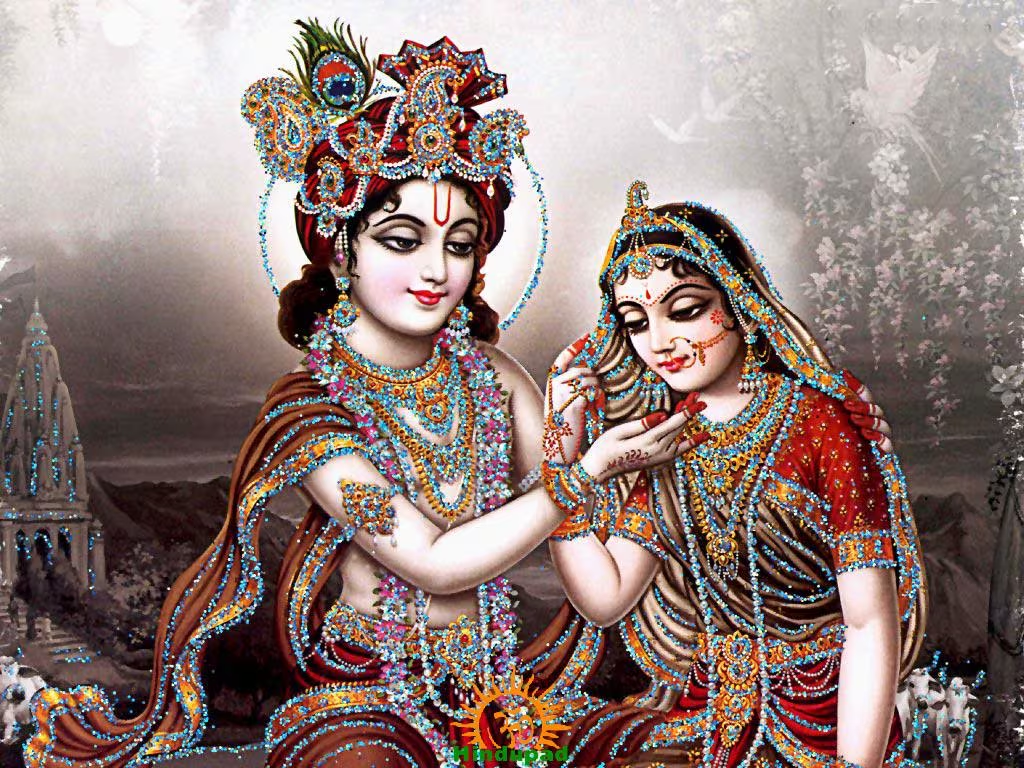Radha Ashtami 2024, also known as Radhashtami, is a sacred Hindu festival dedicated to the birth of Radha Rani, the beloved consort of Lord Krishna. This auspicious day falls on the eighth day (Ashtami) of the Shukla Paksha (waxing phase of the moon) in the Hindu month of Bhadrapada. In 2024, Radha Ashtami will be celebrated with great fervour and devotion on Tuesday, September 3rd. This festival holds immense spiritual significance for devotees of Lord Krishna, particularly those who follow the Vaishnavism tradition. It is a day of deep reverence, joyous celebrations, and profound spiritual practices.
The Significance of Radha Ashtami
Radha Rani, often revered as the embodiment of love, devotion, and grace, is considered the eternal consort of Lord Krishna. Her divine love for Krishna is celebrated in various scriptures, including the Bhagavata Purana and the Gita Govinda. Radha’s love for Krishna is not just romantic; it is symbolic of the soul’s intense yearning for union with the Divine.
The celebration of Radha Ashtami is not merely a ritualistic observance but a profound expression of spiritual devotion. Devotees believe that by worshipping Radha on this day, they can attain the blessings of pure love and devotion, which are essential for achieving spiritual liberation. The day is also significant as it marks the manifestation of Radha’s divine energy, known as Hladini Shakti, which is responsible for blissful experiences in the material and spiritual worlds.
Rituals and Celebrations of Radha Ashtami
The observance of Radha Ashtami is marked by various rituals and customs, each reflecting the deep spiritual significance of the day.
Fasting and Pooja
On Radha Ashtami, devotees observe a strict fast, abstaining from food and water until the conclusion of the Radha Ashtami Pooja. The fast is broken only after performing the evening rituals. Fasting is believed to purify the body and mind, making the devotee more receptive to divine blessings.
The Radha Ashtami Pooja involves the worship of Radha Rani with flowers, incense, and lamps. Devotees offer panjiri, a traditional sweet made of roasted wheat flour, ghee, and sugar, along with fruits and other delicacies to Radha Rani. The rituals are accompanied by the recitation of Radha Ashtami katha, which narrates the divine pastimes of Radha and Krishna. The pooja culminates with the aarti, where devotees sing hymns praising Radha Rani, seeking her blessings for love, devotion, and spiritual upliftment.
Singing Bhajans and Kirtans
Bhajans and kirtans form an integral part of Radha Ashtami celebrations. Devotees gather in temples and homes to sing devotional songs praising Radha and Krishna. These songs, rich in poetic expression, often describe the divine love between Radha and Krishna, invoking a sense of devotion and spiritual ecstasy. The atmosphere during these singing sessions is dedicated, and many devotees experience deep emotional and spiritual states.
Processions and Cultural Programs
In many parts of India, especially in Vrindavan and Barsana—places deeply associated with the life of Radha Rani—grand processions are organized on Radha Ashtami. Devotees carry beautifully adorned idols of Radha and Krishna through the streets, accompanied by singing, dancing, and the chanting of holy names. The processions are a vibrant expression of collective devotion and are often followed by cultural programs that include dance dramas depicting the life and love of Radha and Krishna.
Decorating the Deities
On Radha Ashtami, the idols of Radha and Krishna are adorned with new clothes, jewellery, and flowers. Special attention is given to Radha Rani’s idol, which is decorated with intricate ornaments, including a crown, earrings, and bangles. The deities are also offered a variety of sweets, fruits, and other delicacies as part of the bhog. The decoration of the deities is symbolic of the love and devotion that devotees have for Radha and Krishna.
Radha Ashtami in Vrindavan and Barsana
Vrindavan and Barsana are the two most significant places associated with Radha Rani, and the celebrations of Radha Ashtami in these towns are unparalleled in their grandeur and devotion.
Vrindavan
Vrindavan, the land where Radha and Krishna spent their childhood, is a hub of Radha Ashtami celebrations. The Banke Bihari Temple in Vrindavan witnesses a massive influx of devotees on this day. The temple is beautifully decorated, and special rituals are performed to honour Radha Rani. The atmosphere is filled with the sound of bhajans and kirtans, and devotees participate in the abhishekam (ritual bathing) of the deities with milk, curd, honey, and other sacred substances.
Barsana
Barsana, believed to be the birthplace of Radha Rani, hosts some of the most elaborate Radha Ashtami celebrations. The Radha Rani Temple in Barsana becomes the focal point of festivities. The temple is adorned with flowers, lights, and colourful decorations. Devotees from all over the country visit Barsana to offer their prayers and participate in the grand celebrations. The Lathmar Holi, a unique form of Holi where women playfully beat men with sticks, is also a part of the Radha Ashtami festivities in Barsana, symbolizing the playful and loving nature of Radha and Krishna’s relationship.
The Spiritual Message of Radha Ashtami
Radha Ashtami is more than just a festival; it is a reminder of the pure, selfless love that Radha symbolizes. Her love for Krishna transcends the material realm and represents the soul’s eternal quest for union with the Divine. The festival encourages devotees to cultivate qualities of love, devotion, and surrender in their spiritual journey.
By celebrating Radha Ashtami, devotees not only honour Radha Rani but also seek to imbibe her divine qualities in their lives. The festival inspires individuals to rise above worldly attachments and to seek the higher purpose of life, which is to connect with the Divine.
In conclusion, Radha Ashtami 2024 is an opportunity for devotees to immerse themselves in the divine love of Radha and Krishna. The rituals, prayers, and celebrations associated with this day are aimed at deepening one’s spiritual practice and seeking the blessings of Radha Rani for a life filled with love, devotion, and spiritual fulfilment.




